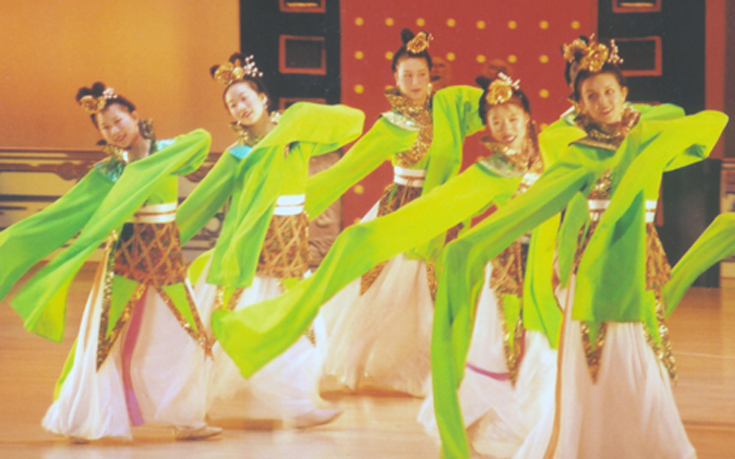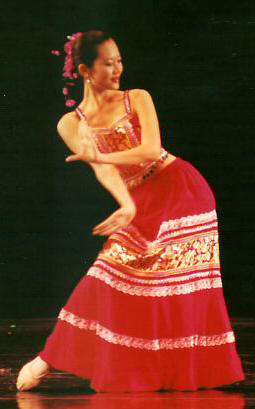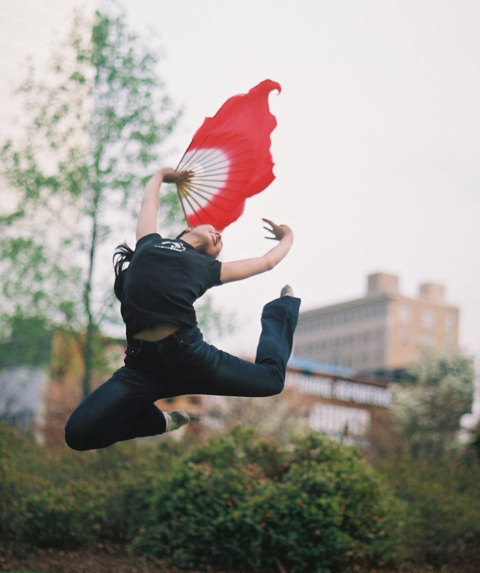|
Like women in America, Chinese females
today often chatter about which guy to date or stressful school days. In
ancient China, there were no such problems—arranged marriages were the norm, and
women were banned from going to school.
Atlanta Chinese Dance Company’s Nu:
Past and Present traces the development of the image, lifestyle, and
societal role of women (“nu” in Chinese) over the course of China’s five
thousand year history. From the women of the dynasties, to the village women of
China's fifty-six ethnic groups, to the technology dependent women of
present-day China and abroad, ACDC's newest full-length production utilizes
classical, folk, and contemporary Chinese dance vocabulary to explore various
facets of the Chinese female. Featuring award-winning pieces from China as
well as guest artists from Atlanta Ballet and Dance China NY, Nu: Past and Present is a performance not to be missed!
Women of China's Dynasties
Nu: Past and Present begins with
a study of women of the ancient dynasties such as the Eastern Jin (317-420),
Southern and Northern (420-588), Tang (618-907), Song (960-1279), and Qing
(1644-1911). While many of these women hailed from economically well-off
families, most had little free choice in China’s patriarchal society. As
Mencius (370-300 BCE), a Chinese philosopher and follower of Confucianism,
outlined in the Three Subordinations, “A woman was to be
subordinate to her father in youth, her husband in maturity, and her son in old
age.” Like young women today, they often dreamed about their future lives with
their true love (as shown in the dance pieces “Moonlight Over the Spring River”
and “Ta Ge”). However, because of arranged marriages, most never married their
true love (“Forbidden Love”). Some were sold as concubines or
entertainers against their will (“Imperial Palace” and “Pipa Xing”). Women did
not go to school unless they were able to disguise themselves as men (“Zhu
Yingtai”). There were also a few exceptional women like Liang Hongyu who
transcended Chinese patriarchy to defend their country alongside men (“Heroine
of the Song Dynasty”).
Women of Rural China
The lives of Chinese women in the
working class were drastically different from those of the aristocracy. Because
their families were often poor, women and children were expected to work
alongside the men (“Bean Harvest” and “Women of the Yellow River Basin”). As
they spent a lot of time outdoors, young women often spent their free time
flying kites and exploring nature (“Kite Dance” and “Mountain Girl”). While the
vast majority of Chinese working class women are of the Han ethnic group, China
has fifty-five other ethnic groups such as the Tibetan, Mongolian, Xinjiang Wei
Wu Er, and Dai. Women of each ethnic group have distinct characteristics
and traditions, and such differences are reflected in their folk dances
(“Tibetan Lucky Drum Dance,” “Mongolian Grassland Girls,” “Xinjiang Happy
Celebration,” and “Dance of the Dai Lady").
Contemporary Chinese Women
The final section of Nu: Past and
Present showcases Chinese women of contemporary society. Public school
education is now a privilege for most (“Go to School”), and many women have
renewed hope for the future (“A Green Leaf”). In today’s increasingly
global world, the lifestyles of Chinese women in both China and abroad are
becoming more
similar to women of the western world (“Nu 2000”).
About the Atlanta Chinese Dance
Company
Throughout its sixteen year history,
ACDC has been dedicated to promoting the development, advancement, and
appreciation of Chinese culture to both Chinese and non-Chinese communities in
metro Atlanta and surrounding areas. Founded by Hwee-Eng Y. Lee in 1991, ACDC
currently trains over eighty dancers. The company has presented twelve
full-evening productions in theaters such as the Performing Arts Center at Gwinnett Center,
Robert Ferst Center for the Arts, and Rialto Center for the Performing Arts in
metro Atlanta and the Pellissippi State Technical Community College Performing
Arts Center in Knoxville, Tennessee as well as smaller community outreach
performances throughout metro Atlanta. ACDC appeared in the Opening and Closing
ceremonies of the 1996 Centennial Olympic Games and has been featured in the
“Chinese variation” of John McFall’s The Nutcracker with Atlanta Ballet
at the Fabulous Fox Theater since 1998. Most recently, ACDC represented
Atlanta Ballet’s The Nutcracker cast for the live telecast of The
Lighting of Atlantic Station in November 2006.
This program is supported in part by:


Photos by Lander Stoddard
Pictured above (from left to right):
April Huang, Melissa Ting, Chanie Howard, Queena Kou, and Autumn Coleman ("Ta
Ge")
Eugenie Ooi ("Dance of the Dai Lady")
Kerry Lee ("Nu 2000") |




